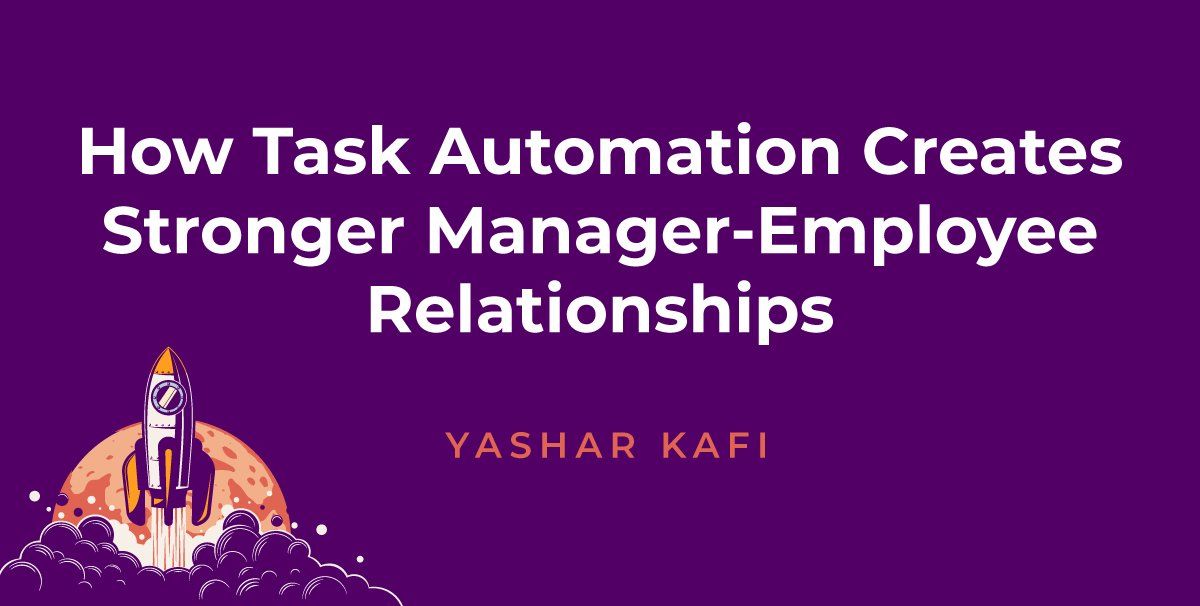How Task Automation Creates Stronger Manager-Employee Relationships
More and more managers and leaders are realizing the revolutionary impact that a stellar digital transformation strategy can have on their manager-employee relationships. In fact, the experts at shrm.org are calling these days “The Automation Revolution.”
In the not too distant future, managerial tasks will be automated away, creating space for managers to build more human relationships with their employees. This article will explore the ways in which task automation specifically creates stronger, more human bonds between mangers and their teams in the corporate workplace.
3 Areas Managerial Tasks Can Be Automated
As alluded to above, more and more managerial tasks will be automated as we move forward into the future. In fact, an article published by Computer Weekly quoted expert analysts at Gartner, who recently predicted that more than two-thirds (roughly 69%) of the work currently done by managers will be automated by 2024. This includes — but is not limited to — administrative tasks, financial tasks, and customer support operations. Seen below are just a few examples of the types of functions within each category that will soon be automated and powered by AI. For a more comprehensive listing, you can find 20 business tasks you can easily automate covered here.
Administrative tasks
- Scheduling
- Approving time-off
- Job recruitment
Financial tasks
- Payroll
- Invoicing
- Bill payments
Client/Customer support
- Generate help/support desk tickets
- Email responses: customized canned responses to frequently asked questions
Changing Management Focus with Digital Transformation
Adopting digital transformation is no longer an option for today’s organizations–it’s a reality that is here to stay. But the good news is that it can open the door to a whole new way of management. Think about it this way: Automating tasks frees up both management and their team to step away from their previous laundry list of completing (now automated) tasks and start building actual human relationships within their ranks.
Imagine it: Managers and leaders can now “get out there” and have actual face time with their employees, customers, partners and users. In this way, digital transformation — automation in particular — can work for you and revolutionize the way you do business, and build (more personal) bridges. Let’s take a closer look at what this might actual look like and allow to be cultivated in your corporate culture.
1. Coaching and Mentorship
- You can spend more time with employees and become a cheerleader for their success
- You will have more opportunities to keep your people motivated
2. Feedback and Team Skill development
- Face-to-face interactions will allow for more personalized and tailored feedback
- You will have greater opportunities to work on individual and team strengths and weaknesses
3. Rewards and Recognition
- You will be freed up to spend more time focusing in on — and rewarding and recognizing — employees or teams who are doing good work.
4. Management Focus - Assistance with Mental Wellbeing
Workplace burnout is a real problem in the corporate world today, and it´s on the rise. For this reason, now that automation is freeing them up a bit more, management needs to make it a top priority to create a workplace where employees feel they can not only discuss their mental wellbeing with their managers, but where those workers have the confidence and assurance that they will be supported and given resources to help them cope and thrive.
Above all, leadership needs to be open and empathetic to their team, fostering a safe and supportive environment where everyone feels comfortable — and encouraged — to discuss their mental and emotional struggles. Because the last thing a worker wants to feel is like they are just a cog in the corporate wheel, stuck in a transactional relationship.
For more information on how you can strengthen your workplace relationships and improve your management style, and more, contact us today.




